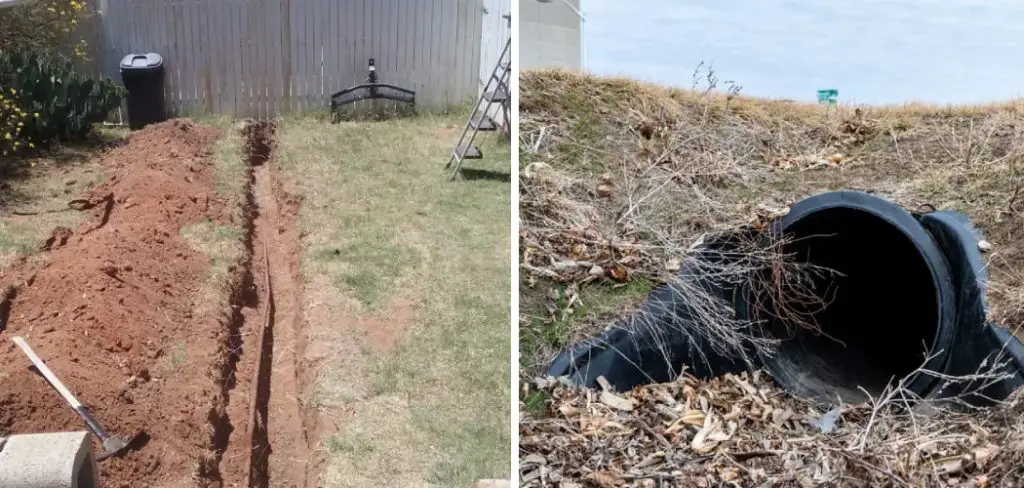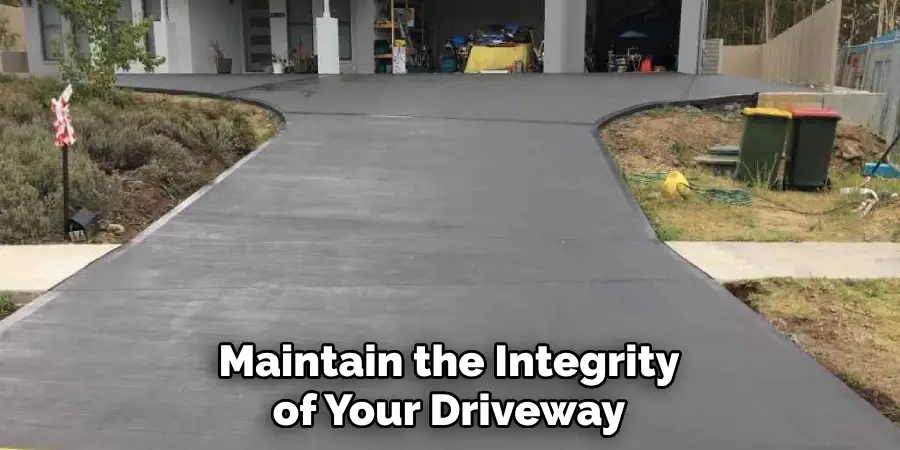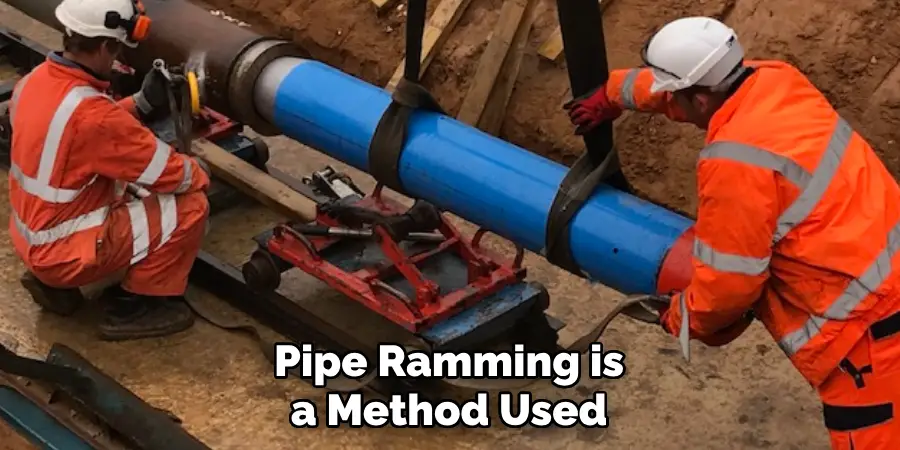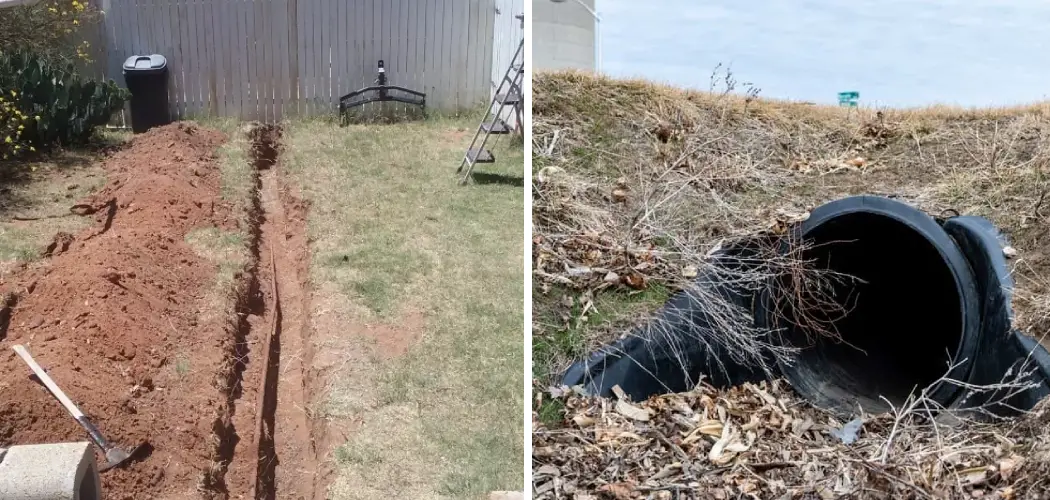Undertaking the task of tunneling under a driveway may seem like a daunting challenge, but with the right guidance and approach, it becomes a manageable endeavor for various home improvement projects.

Whether you’re installing utilities, extending landscaping features, or laying down irrigation systems, mastering the technique of tunneling beneath a driveway is essential. In this comprehensive guide, we will explore the step-by-step process of how to tunnel under driveway.
From evaluating soil conditions and choosing appropriate tools to planning the tunnel route and executing the excavation, we’ll provide valuable insights and practical tips. By understanding the nuances of this task, homeowners and DIY enthusiasts can confidently tackle the project, ensuring a safe and effective passage beneath their driveway for various utility and landscaping needs. Unlock the potential of your property with the knowledge to navigate this common obstacle seamlessly.
Purpose of Tunneling under a Driveway
There are plenty of reasons why someone would want to tunnel underneath their driveway. Some people may be looking to install sprinkler systems, electric cables or pipes for a new water feature in their garden. Others may be looking to connect a pool heater or even an outdoor kitchen to the main gas line. Regardless of the specific purpose, tunneling under a driveway can often be necessary to achieve these goals.
One of the main reasons for tunneling under a driveway is to avoid any disruption or damage to the driveway itself. It can be quite costly and time-consuming to dig up and then re-pave a driveway, not to mention the inconvenience it causes in terms of accessibility. By tunneling underneath, you can maintain the integrity of your driveway while still being able to complete the necessary installation.

Another reason for tunneling under a driveway is to avoid any potential damage to existing underground utilities. In many cases, there may be utility lines or pipes running underneath a driveway that you may not be aware of. By tunneling under, you can avoid accidentally hitting and damaging these important systems.
Tunneling under a driveway also allows for a cleaner and more organized installation process. Instead of digging trenches and creating a mess on the surface, tunneling allows for a more precise and controlled placement of pipes or cables. This can make future maintenance or repairs much easier as well.
10 Methods How to Tunnel under Driveway
1. Use a Hydraulic Boring Machine
One of the most effective methods for tunneling under a driveway is by using a hydraulic boring machine. This powerful tool can create a hole large enough to fit pipes or cables underneath the driveway without causing any damage. A hydraulic boring machine works by using water pressure to bore through the ground, making it easy to create a tunnel under your driveway.
2. Digging by Hand
If you have a small area to tunnel under, you may be able to dig by hand using shovels and other digging tools. This method takes more time and effort, but it can be a cost-effective option for smaller projects. Before you begin digging, make sure to mark the area where you plan to tunnel. This will help you avoid any utilities or other potential hazards underground.
3. Utilize a Trencher
A trencher is another useful tool for creating a tunnel under your driveway. This machine can cut through soil and compacted dirt easily, making it ideal for larger projects that require longer tunnels.

4. Horizontal Directional Drilling (HDD)
Horizontal directional drilling, also known as HDD, is a popular method for tunneling under driveways. It involves drilling horizontally underground and then pulling pipes or cables through the drilled hole. HDD is commonly used for installing utility lines, such as water, sewer, gas, and telecommunications. It is also used for laying conduit pipes for electrical and fiber optic cables.
5. Install Culverts
Culverts are large pipes or tubes that can be installed underneath driveways to allow water to flow through freely. These can also be used as tunnels for small vehicles or equipment. Installing culverts requires careful planning and proper installation to ensure that they function effectively. However, this is a more complex and costly option than other methods of tunneling under a driveway.
6. Jackhammer Method
Using a jackhammer, you can break up the concrete on your driveway and create an opening for your tunnel underneath. This method requires caution and precision to avoid damaging the surrounding areas.
First, use a chalk line to mark the area where you will be drilling. Then, with protective gear on and the jackhammer set to its lowest setting, carefully start chipping away at the concrete. Slowly increase the power as needed until you have created a hole large enough for your tunnel.
7. Create an Underground Tunnel
For longer tunnels or larger projects, creating an underground tunnel may be the best option. This involves digging out an entire pathway underneath your driveway and reinforcing it with concrete walls and supports. The process of creating an underground tunnel is more complex and requires special tools, so it may be best to hire a professional contractor for this type of project.
8. Hire Professionals
Tunneling under driveways can be a difficult and potentially dangerous task, so it’s always best to hire professionals who have experience in this type of work. They will have the necessary equipment and expertise to complete the job safely and efficiently.
There are several factors to consider when hiring professionals for this task. First, make sure they are licensed and insured. This will protect you in case of any accidents or damages that may occur during the tunneling process.
9. Use a Pipe Ramming Technique
Pipe ramming is a method used to install pipes underground without the need for digging or trenching. It involves using a pneumatic hammer to drive the pipe through the soil and create a tunnel.

This technique is commonly used for crossing roads, railways, and other obstacles. The pipe ramming machine has a large pneumatic hammer attached to the front of it, which strikes the back end of the pipe, forcing it into the ground.
10. Consider Using Microtunneling
Microtunneling is another option for tunneling under driveways, especially in areas with high water tables or unstable soils. This method uses a microtunnel boring machine to excavate the soil and install pipes simultaneously. This is a relatively quick and efficient process that minimizes the disturbance to the surrounding area. However, it requires specialized equipment and may not be suitable for all projects.
Things to Consider When Tunneling Under a Driveway
Driveways are a common feature in residential areas and provide convenient access to homes. However, there may come a time when you need to tunnel under your driveway for various reasons. It could be to install an irrigation system, lay down piping or wiring, or even create a new entrance for vehicles.
Tunneling under a driveway can be a challenging task, but with proper planning and execution, it can be done successfully. Before you start digging, there are several important things to consider to ensure the safety of both yourself and your property.
Checking for Utility Lines
Before you start any excavation work, it is crucial to check for utility lines that may run under your driveway. These include water pipes, gas lines, and electrical wires. Hitting any of these can result in serious damage and even pose a threat to your safety.
To avoid this, contact your local utility company to come and mark the location of any underground utilities. This will give you a clear idea of where it is safe to dig and help prevent any potential accidents from occurring.
Choosing the Right Equipment
Tunneling under a driveway requires the use of specialized equipment, such as a mini excavator or a tunnel boring machine. These machines are specifically designed for underground excavation and make the process much easier and safer.
When choosing your equipment, consider the size of your driveway and the depth you need to dig. It is also essential to hire experienced operators who can handle the equipment properly and ensure the safety of everyone involved.

Planning the Route
Before you start digging, carefully plan the route you will take under your driveway. This includes determining the entry and exit points and making sure they are wide enough for your equipment to fit through.
It is also important to consider any obstacles that may be in the way, such as tree roots or large rocks. These can slow down the tunneling process or even cause damage to your equipment.
Conclusion
In conclusion, it may seem daunting to have to tunnel under your driveway, but with the right tools, preparation, and techniques, it is definitely achievable. Remember to always prioritize safety and consult a professional if needed. And don’t be afraid to get creative with ways to make the process easier and more efficient.
So go ahead and give it a try! It may require some sweat and determination, but the satisfaction of successfully completing this task will be worth it in the end. Have confidence in yourself, trust the process and enjoy the final results.
You have all the necessary information to get started and now it’s up to you to take action. Good luck with your tunneling journey and remember to share your experience with others in need of this helpful guide on how to tunnel under driveway!

